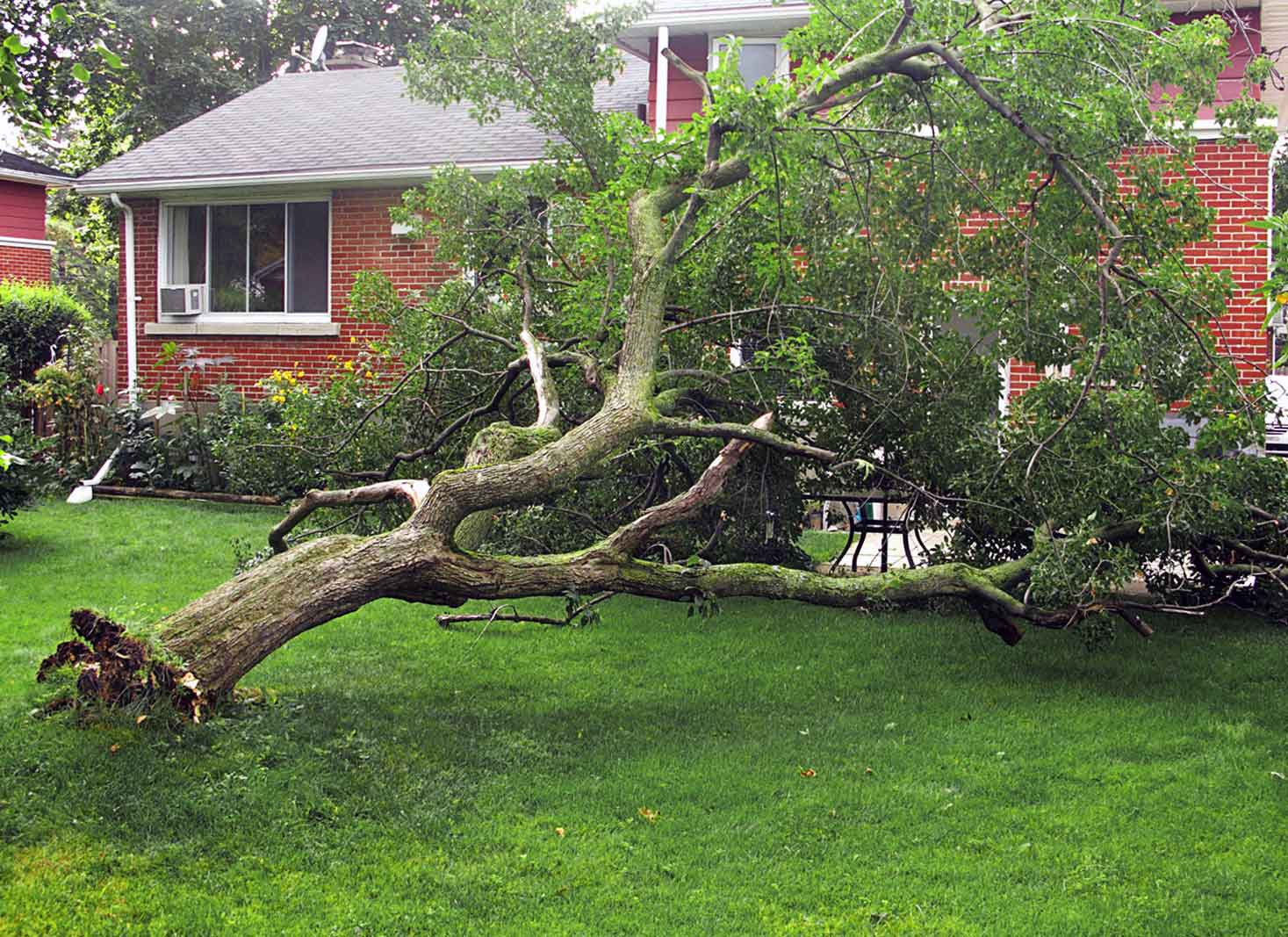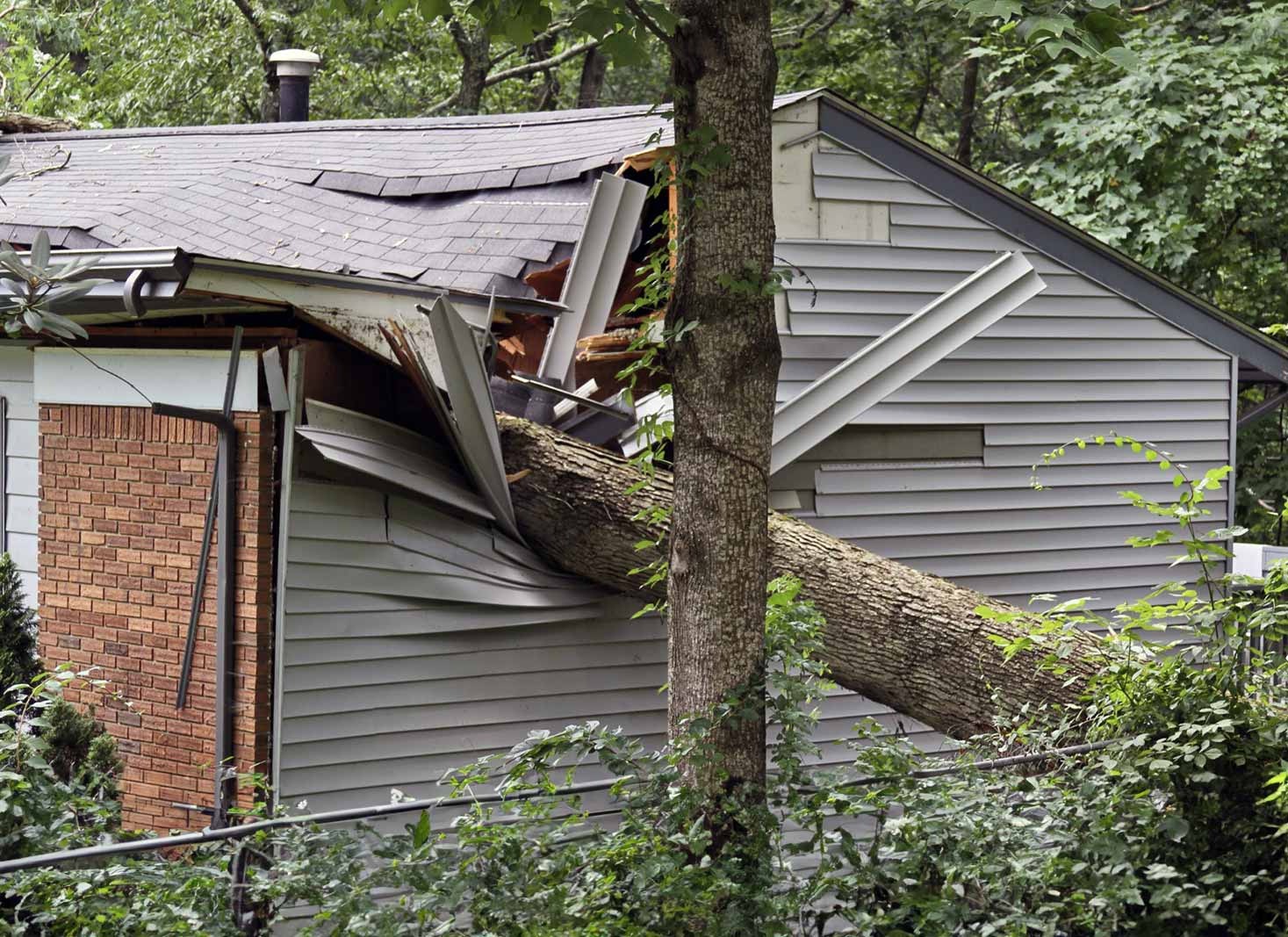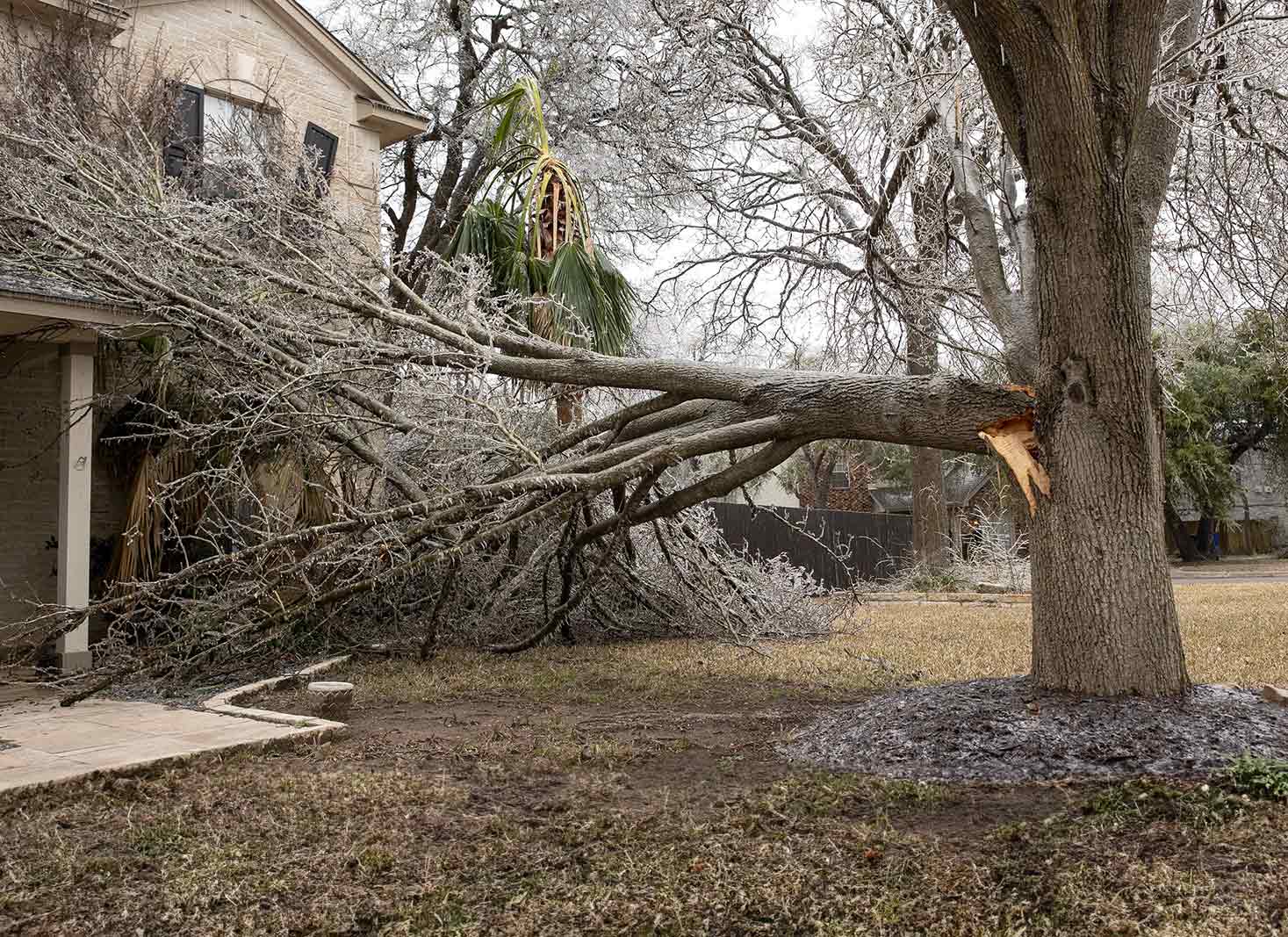Understanding the ins and outs of tree damage coverage can be confusing, but fear not! We’ll take you through the essential aspects of home insurance and tree damage, including types of tree damage covered, limitations and exclusions, and how to file a claim when asking, “Does home insurance cover tree damage?” So let’s get started!
Short Summary
- Home insurance may cover tree damage caused in certain conditions such as wind and storms, subject to policy terms and conditions.
- Elective removal of healthy or diseased trees is unlikely to be covered by most insurers.
- It is important to review one’s policy for specifics to understand what is covered.
Table of contents
ToggleHome Insurance and Tree Damage: What's Covered?

Home insurance may cover tree damage caused by storms, wind, or other natural disasters, but not due to neglect or improper maintenance. With home insurance covering tree damage, your insurance policy’s coverage varies based on specific terms and conditions, so reviewing your policy for details is essential.
If a tree falls on your house or property due to a storm, home insurance may provide cover for cleanup, removal, and repairs.
It’s important to note that if insurance companies can prove neglect, loss or damage from the fallen tree may not be covered. An example might be if a tree has been dead for years, just rotting in the ground; when it finally falls over because you neglected to remove it, they may not cover the damage.
Types of tree damage covered
Your home insurance policy may cover the damage if a healthy tree falls on your property due to a storm. However, if it is evident that the tree is deceased or decaying and you failed to maintain it, the insurance company may not cover the damage.
Keep in mind that insurance coverage for tree damage varies based on your specific policy, so it’s crucial to review your policy’s terms and conditions to know what types of tree damage are covered and under what circumstances.
Limitations and exclusions
Home insurance policies typically have limitations and exclusions when it comes to tree damage coverage. For instance, insurance generally covers up to 5% of your total dwelling coverage limit or a maximum of $500 per tree for removal. Additionally, home insurance policies may not cover damage caused by tree roots, as it’s often considered a maintenance issue rather than a covered peril.
You must be aware of these limitations and exclusions and review your policy for specifics. This way, you’ll better understand what’s covered and what’s not, helping you make informed decisions regarding tree damage and home insurance.
Neighbour's Trees and Home Insurance

In some cases, your home insurance policy may cover damage caused by a neighbour’s tree, depending on the specific circumstances and the policy’s terms. For example, if your neighbour’s tree falls on your property and the tree was in poor condition due to neglect, your neighbour’s insurance company should reimburse the damage. In this case, it was your neighbour’s fault, so their insurance should cover the bill.
On the other hand, if your tree falls on your neighbour’s property, you are typically only liable if your negligence played a role in the tree’s demise. Otherwise, your neighbour must file a claim through their insurance.
When your tree falls on your neighbour's property
If your tree falls on your neighbour’s property, you may be liable depending on its condition and whether you were negligent in maintaining it. For example, if you were aware of the potential danger posed by the tree and did not take appropriate steps to address it, you may be held accountable should it fall on your neighbour’s property and cause damage.
However, you may not be liable if the tree was healthy and fell due to a covered peril, such as a storm. In this case, your neighbour could claim on their insurance policy for the damages caused when your neighbour’s tree falls.
When my neighbour's tree falls on my property
Your home insurance may cover the damage if your neighbour’s tree falls on your property due to a natural disaster such as a cyclone or storm. However, if the tree was in poor condition and your neighbour was negligent in maintaining it, their insurance company should reimburse the damage.
Does insurance cover all fallen trees?
Not all fallen trees are covered by insurance. Coverage depends on the cause of the fall and whether it resulted in property damage. For example, home insurance typically does not cover tree debris removal if a tree falls and does not cause any structural damage.
However, if a falling tree becomes a fallen tree and causes damage to insured property, it may be eligible for coverage under an insurance policy. Reviewing your policy to understand the specific conditions under which fallen trees are covered and how the coverage may apply in different scenarios is essential.
Filing a Tree Damage Insurance Claim

Filing a tree damage insurance claim requires assessing the damage, documenting evidence, and determining if your policy covers the incident. If the tree damage is due to wind, a storm or a natural disaster, and the cost of repairs exceeds your deductible, it’s essential to file a claim.
When filing a claim, it’s crucial to provide documentation and proof of the damage, such as photos and videos, as well as any other relevant documents. Contact your insurance provider to file a tree damage claim and ensure you have all the necessary information and evidence to support your claim.
When to file a claim
I suggest filing as soon as possible. It would be great if the insurer could send out someone to assess the damage and the fallen tree before it is removed, as well as the damage to your home. The quicker you can finale the claim the better.
Documentation and evidence
When filing a tree damage insurance claim, providing documentation and evidence to support your claim is essential. Examples of documentation and evidence that can be provided include photos of the damage, estimates for repair costs, and any other relevant documents.
The documentation and evidence can be submitted to your insurance company in person, by mail, or online. It’s important to secure all documentation and evidence related to your claim, as it may be necessary for future reference and to ensure a smooth claims process.
FAQ's
Building insurance may not cover tree root damage, as it’s often considered a maintenance issue rather than an accident or ‘act of god’. Tree root damage refers to the damage caused by the roots of a tree to a building or other structure, such as foundations, walls, driveways, and other structures.
However, building insurance may cover tree root damage if a storm has caused the root ball of the tree to lift, which caused the damage. Reviewing your policy and understanding the specific circumstances under which building insurance covers tree root damage and how the coverage may apply in different scenarios is essential.
It is possible for a fallen tree, if not too large, to stand back up if it has not suffered major structural damage. It will most likely need to be braced with cables or stakes. The larger the tree the less likely the success of standing it back up.






